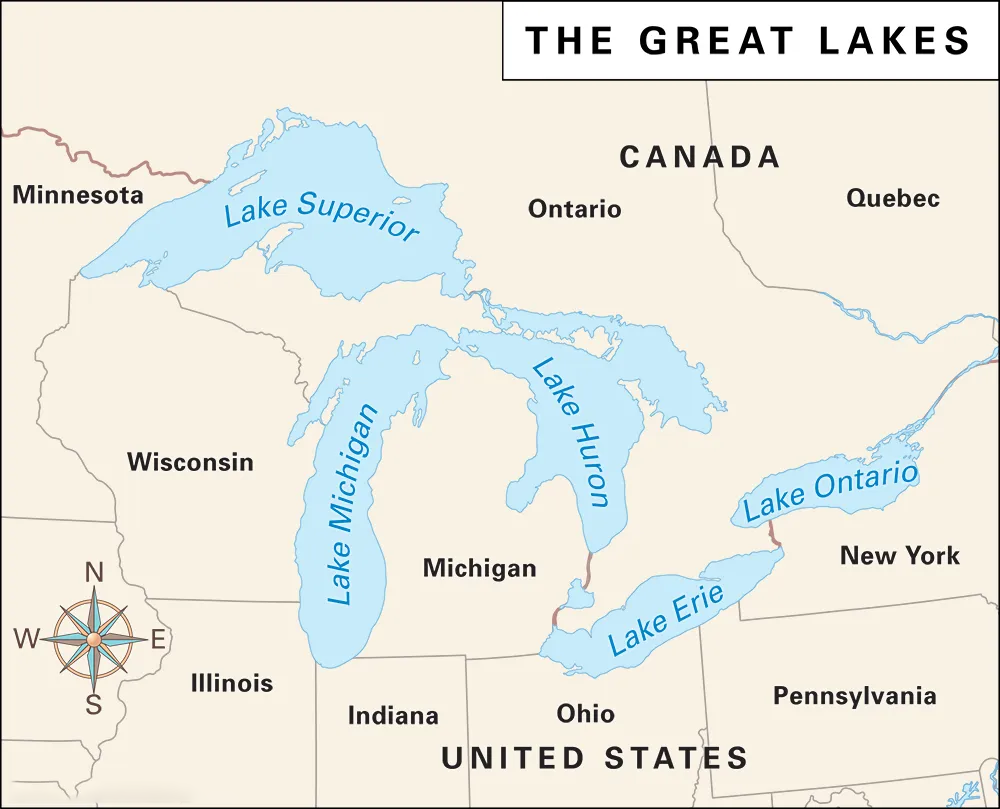Rapid Fire
Arctic and Great Lakes Ice Trends
- 07 Mar 2024
- 1 min read
A recent study forecasts the Arctic's initial ice-free conditions by August or September of 2030, regardless of emission scenarios, with the possibility of recurring occurrences by mid-century (2035–2067).
- In recent years, the Arctic Ocean had around 3.3 million km2 of sea ice at its minimum in September 2023.
- Arctic sea ice reaches its minimum extent in September every year.
- Concurrently, the Great Lakes, comprising Superior, Michigan, Huron, Erie, and Ontario have witnessed notably reduced ice cover for 2 consecutive years.
- They are renowned as Earth's 'freshwater tower,' and are now witnessing unprecedented declines in ice cover, attributed to global warming and the El Nino phenomenon.
- The year 2023 was designated as the hottest on record, largely influenced by El Nino.
- They are renowned as Earth's 'freshwater tower,' and are now witnessing unprecedented declines in ice cover, attributed to global warming and the El Nino phenomenon.
Read more: Arctic Region and Melting Aspirations, Great Lakes






